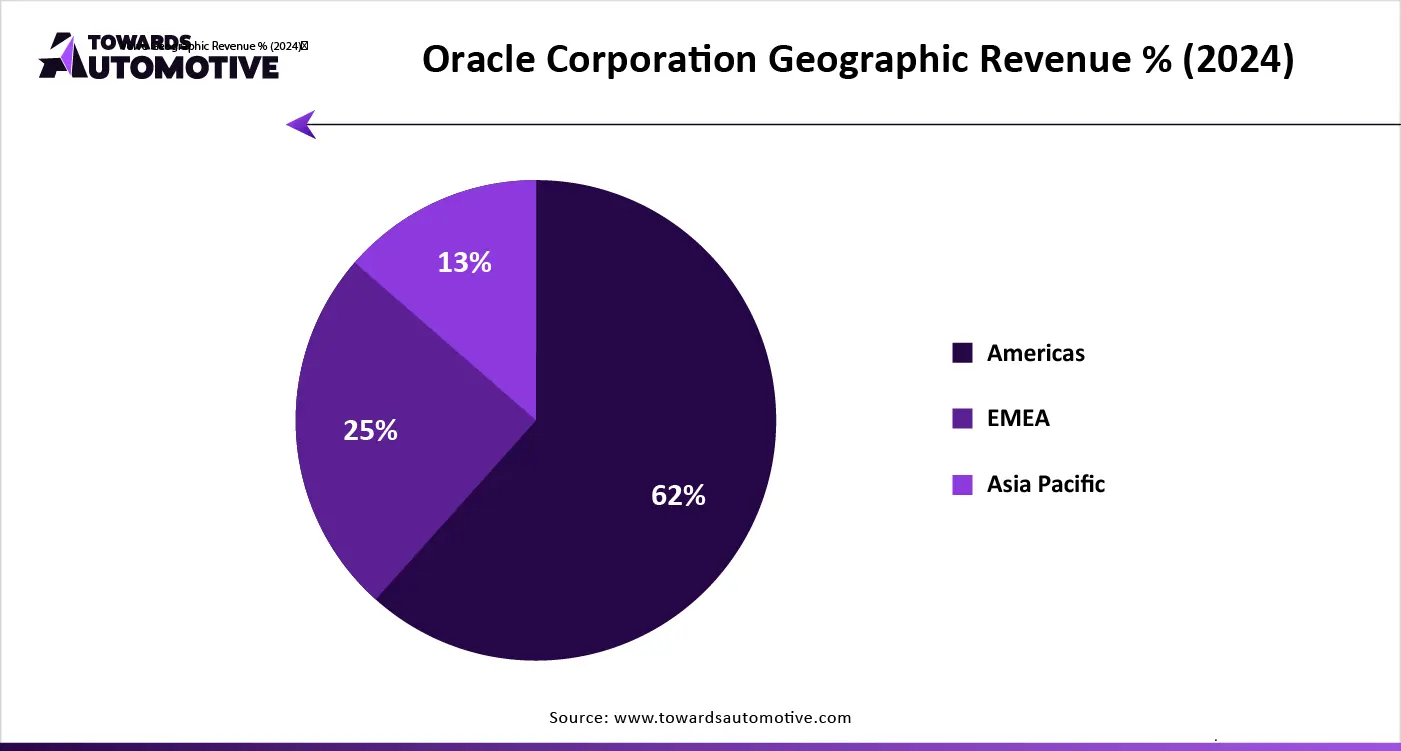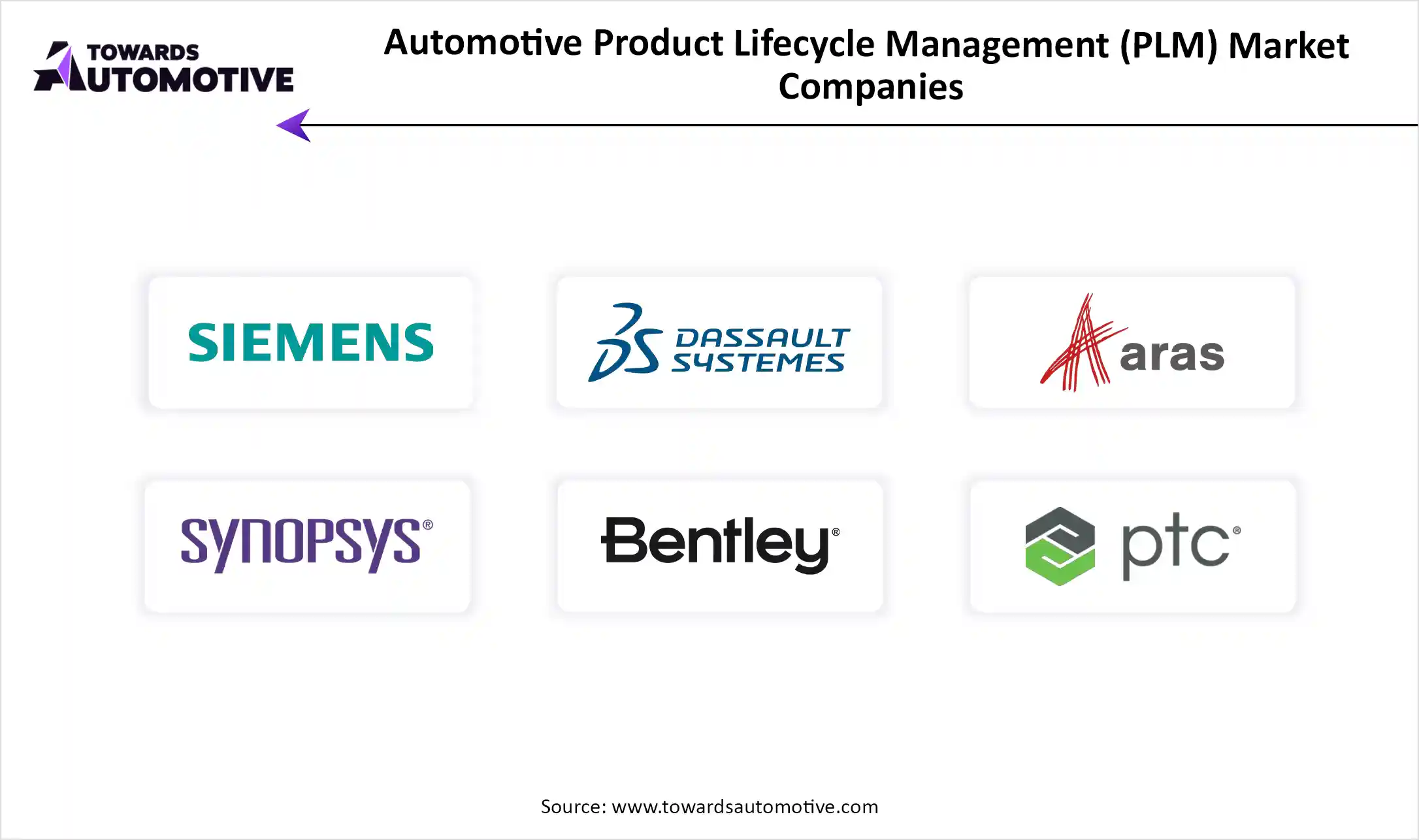October 2025
A revenue surge in the automotive product lifestyle management (PLM) market is on the horizon, with growth expected to reach hundreds of millions by 2034, revolutionizing the transportation landscape. The increasing demand for smart manufacturing solution in the automotive sector coupled with rise in number of automotive software startups across the APAC region has driven the market expansion.
Additionally, the growing investment by automotive brands to enhance their designing capabilities along with rising adoption of electric vehicles to curb emission is playing a vital role in shaping the industrial landscape. The integration of IoT and AI in product management solutions is expected to create ample growth opportunities for the market players in the upcoming days.
The automotive product lifestyle management (PLM) market is a prominent segment of the automotive industry. This industry deals in development and distribution of advanced PLM solutions for the automotive sector. There are various component of this sector consisting of software and services. These solutions are deployment on different modes comprising of on-premises, cloud-based and some others. It finds application in numerous automotive operations including product data management (PDM), collaborative product definition management (cPDM), simulation & analysis (Crash, NVH, Thermal, Structural), manufacturing process management (MPM), portfolio & program management, regulatory compliance management and some others. The end-users of this sector comprises of OEMs, tier 1 & tier 2 suppliers, automotive design & engineering service providers, and some others. This market is expected to rise significantly with the growth of the software development sector around the globe.
| Metric | Details |
| Growth Drivers | Smart manufacturing, EV adoption, IoT & AI integration, automotive software startups |
| Leading Region | Europe |
| Market Segmentation | By Component, By Deployment Mode, By Application, By Vehicle Type, By End-User and By Region |
| Top Key Players | Siemens AG, Dassault Systems, SAP SE, Oracle, Autodesk, PTC Inc., IBM, Altair, Aras |
The major trends in this market consists of partnerships, fundings and increasing sales of passenger vehicles.
The software segment dominated the market with a share of 63%. The growing demand for advanced product data management (PDM) software in the automotive sector has boosted the market expansion. Additionally, rising emphasis of automotive brands for integrating computer-aided design software (CAD) and computer-aided engineering software (CAE) to enhance the designing process is playing a crucial role in shaping the industrial landscape. Moreover, partnerships among software companies and automotive brands is expected to boost the growth of the automotive product lifestyle management (PLM) market.
The services segment is expected to expand with the highest CAGR during the forecast period. The rising demand for consulting & strategy services in the EV sector has boosted the market expansion. Also, the growing demand for cloud-based implementation software in the automotive industry is playing a crucial role in shaping the industry in a positive direction. Moreover, the increasing adoption of subscription-based services by car manufacturers is expected to drive the growth of the automotive product lifestyle management (PLM) market.
The on-premises segment held the largest share of the market with 58%. The increasing demand for affordable PLM solutions in the automotive sector has boosted the market expansion. Additionally, the integration of on-premise computer-aided design (CAD) software and computer-aided engineering (CAE) software in the automotive designing center is playing a vital role in shaping the industrial landscape. Moreover, numerous advantages of on-premises software including enhanced control, high security, superior customization and some others is expected to propel the growth of the automotive product lifestyle management (PLM) market.
The cloud-based segment is expected to expand with the fastest CAGR during the forecast period. The growing use of cloud-based PLM software in automotive manufacturing centers to enhance the production capabilities has driven the market growth. Additionally, the availability of advanced automotive software in public cloud platforms such as Google Cloud and AWS is contributing to the industry in a positive manner. Moreover, several advantages of cloud-based software including cost savings, flexibility, scalability, enhanced collaboration and some others is expected to boost the growth of the automotive product lifestyle management (PLM) market.
The product data management (PDM) segment led the market with a share of 35%. The rising adoption of PDM solutions by automotive brands to track, manage, and store data related to product designing and development has boosted the market expansion. Additionally, numerous advantages of product data management including improving collaboration, streamlining processes, enhancing data management and some others is expected to propel the growth of the automotive product lifestyle management (PLM) market.
The simulation & analysis segment is expected to grow with the highest CAGR during the forecast period. The increasing use of advanced PLM solutions for analyzing thermal and structural components in the automotive sector has boosted the market growth. Moreover, the growing adoption of AI-integrated software in automotive workshops to track crash effect on vehicles is expected to foster the growth of the automotive product lifestyle management (PLM) market.
The passenger cars segment dominated the industry with a share of 48%. The growing sales and production of passenger vehicles in several countries such as the U.S., Canada, India, Japan and some others has boosted the market expansion. Additionally, rapid investment by automotive brands for integrating advanced software to enhance the production of passenger cars is playing a vital role in shaping the industrial landscape. Moreover, collaborations among luxury car manufacturers and software providers is expected to boost the growth of the automotive product lifestyle management (PLM) market.
The commercial vehicles segment is expected to rise with the highest CAGR during the forecast period. The deployment of cloud-based PLM software in the truck companies for enhancing the designing capabilities has drive the market growth. Also, the increasing adoption of computer-aided manufacturing (CAM) software in the commercial vehicle sector is playing a prominent role in shaping the industrial landscape. Moreover, joint ventures among bus manufacturers and PLM providers is expected to foster the growth of the automotive product lifestyle management (PLM) market.
The OEMs segment held the largest share of the industry with a share of 61%. The increasing adoption of advanced PLM solutions by automotive OEMs to enhance revenue potential has boosted the market expansion. Additionally, the rising interest of consumers to purchase spare parts from OEMs due to trust and authenticity provided by them is contributing to the industry in a positive manner. Moreover, partnerships among automotive OEMs and software developers to deploy advanced PLM software in automotive workshops is expected to proliferate the growth of the automotive product lifestyle management (PLM) market.
The tier 1&2 suppliers segment is expected to expand with the highest CAGR during the forecast period. The rising adoption of cloud-based product data management (PDM) solution by tier 1 and tier 2 suppliers by enhancing collaboration, streamlining processes, improving product quality and some others has boosted the market expansion. Additionally, the availability of affordable vehicle parts in tier 2 supplier platform is expected to boost the growth of the automotive product lifestyle management (PLM) market.
Europe led the automotive product lifestyle management (PLM) market with a share of 37%. The increasing demand for luxury cars in several countries such as Germany, Italy, France, UK and some others has boosted the market expansion. Additionally, rapid investment by automotive brands such as Ferrari, BMW, Volkswagen, Audi and some others for integrating advanced software to enhance the manufacturing capabilities is playing a vital role in shaping the industrial landscape. Moreover, the presence of numerous market players such as Siemens AG, Dassault Systems, SAP SE and some others is expected to drive the growth of the automotive product lifestyle management (PLM) market in this region.
Germany is the major contributor in this region. The growing sales of commercial vehicles coupled with rapid investment by startups for developing advanced software for the automotive sector is playing a prominent role in shaping the industrial landscape. Moreover, the presence of several automotive brands along with integration of advanced technologies in the automotive industry has driven the market expansion.
Asia Pacific is expected to grow with the highest CAGR during the forecast period. The rising sales and production of passenger vehicles in various nations such as India, China, Japan, South Korea and some others has boosted the market expansion. Also, increasing emphasis of automotive brands for opening up new innovation centers to enhance the designing and manufacturing capabilities is contributing to the industry in a positive direction. Moreover, the presence of several market players such as Tata Consultancy Services, JWI, Zuken, Inc, SteepGraph and some others is expected to propel the growth of the automotive product lifestyle management (PLM) market in this region.
China led the market in this region. The increasing use of advanced software in the automotive sector coupled with rapid investment by automotive brands for enhancing research and development of automotive components is playing a vital role in shaping the industrial landscape. Moreover, the presence of several automotive companies such as BYD, XPENG, Dongfeng Motor and some others has driven the market expansion.
The automotive product lifestyle management (PLM) market is a rapidly developing industry with the presence of several dominating players. Some of the prominent companies in this industry consists of Autodesk Inc., SAP SE, Siemens AG, Dassault Systems, PTC Inc., Oracle Corporation, ANSYS Inc., IBM Corporation, Altair Engineering Inc., Aras Corporation, Synopsys, Inc., Bentley Systems Inc and some others. These companies are constantly engaged in developing PLM solutions for the automotive sector and adopting numerous strategies such as business expansions, joint ventures, acquisitions, collaborations, launches, partnerships, and some others to maintain their dominance in this industry.


By Component
By Deployment Mode
By Application
By Vehicle Type
By End-User
By Region
October 2025
October 2025
October 2025
October 2025
We offer automotive expertise for market projections and customizable research, adaptable to diverse strategic approaches.
Contact Us